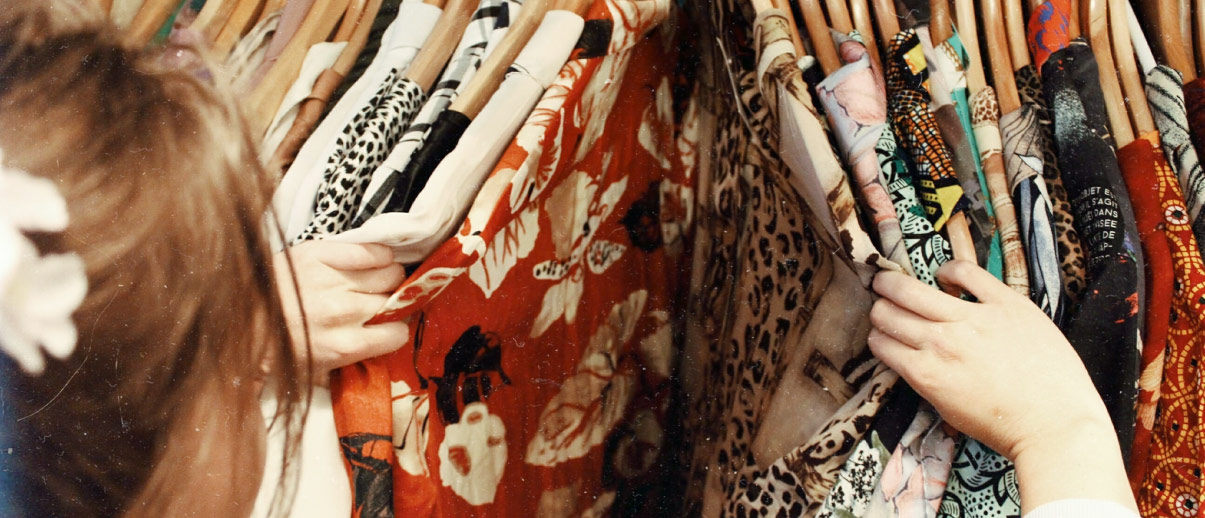Recent Articles
Everything Thrift: The Rise of The Reusable Economy
By Carlos Rosenwald, Senior Strategist, Egg Chicago
As a kid growing up in Rio de Janeiro in the 1990s, I was as Americanized as one could be. My early teenage life consisted of skateboarding, rock music, McDonald’s, and MTV. But when I suddenly found myself calling South Florida home at 15, I was struck by how foreign American culture felt to me. I was still in my Guns ‘N’ Roses and Van Halen phase. Everyone I went to school with were into Nirvana and Pearl Jam. I got excited about the Gap and Quicksilver. They got excited about thrift stores. What was wrong with them?
Looking back, I now see my peers’ embrace of grunge culture and thrift shops as a rejection of 80s consumer culture. I wasn’t surprised, then, when I read thrift stores were becoming a thing with teenagers again. While teen spending hit an all-time low last year, 46% of teens reported shopping for second hand items and thrift stores made the jump to #13 as their ‘favorite brand or retailer’ from #44 in the previous year’s list.
At Egg Strategy, we’re always curious about the motivations and values that shape consumer behavior. As a strategist, I immediately began to wonder what could be driving this second wave of thrift shop mania.
Let’s look at the potential factors at work. The emergence of higher-end re-sale platforms like Poshmark and The RealReal may have stimulated the trend, but selling used clothes online isn’t a new thing. While financial uncertainty due to COVID may have also played a role, it’s never been cheaper to buy new clothes from established brands – and teens remain very much in love with brand names like Nike, American Eagle, and Lululemon.
Debunking these potential causes leaves us to consider one undeniable truth about Gen Z that sits in contrast to previous generations – their sense of urgency regarding climate change. This generation grew up learning about environmental crises in the news, in school, at family dinners. Now they want to see action. This has partially come to life with the “reusable economy” concept – the idea that extending the useful life of everyday products by even a few months can drastically reduce their environmental footprint.
A few mainstream brands are beginning to embrace this idea. Levi’s has recently launched a repair service for jeans consumers already own, and now also sell second hand jeans they collect and clean on a new online store. Their move is based on data that shows “wearing jeans for 10 months longer will shrink its carbon footprint by 18% and water footprint by 23%.” And while this initiative follows similar programs by Patagonia and The North Face, the reusable economy stretches far beyond the apparel space. For example, IKEA recently rolled out a large-scale furniture buyback program in 27 countries last year. Additionally, Burger King will begin testing reusable containers in their restaurants sometime this year.
Reading about these efforts got me thinking about what other considerations brands
may want to start paying attention to moving forward:
- Second Hand May Come In First Place / While seeing consumers purchase fewer new products may cause initial alarm for brands, extended product lifecycles also create opportunities in emerging spaces like product care and repair services – and though reconsidering a brand’s strategic imperatives is always challenging, securing first-mover advantage within a category could prove a real difference maker in this case.
- Durable Means Premium / The emphasis on cheap and replaceable products that has lingered for decades may start shifting back towards durability even if that means paying a higher price. While product guarantees can be effective in instilling consumer confidence, building a reputation for quality and durability should be at the core of a long-term brand strategy.
- Planning For the Now / When it comes to the food space specifically, consumers’ drive to eliminate waste will continue to accelerate towards more frequent trips to the store in an effort to only buy what they know they will use. Knowing that convenience will always be of singular importance, we may see a more drastic shift towards a mobile-first approach where grocery subscription services and automated shopping experiences overtake the physical grocery shopping experience.
While the long-term impact of these initiatives are yet to be seen, the start is certainly encouraging. Regardless, with Gen Z growing in influence and spending power, sustainable efforts will certainly to grow in importance when they evaluate and shop a brand – with those brands that answer this call to action first carving a special place in their hearts and in their minds.
